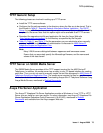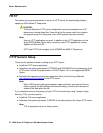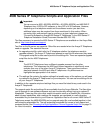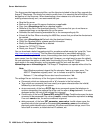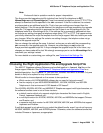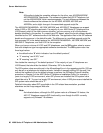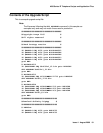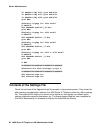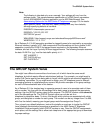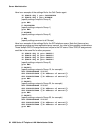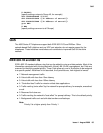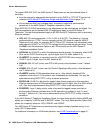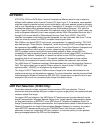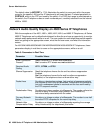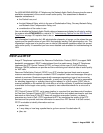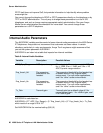
The GROUP System Value
Issue 4 August 2006 83
Note:
Note: The following is intended only as an example. Your settings will vary from the
settings shown. This sample assumes specification of a DNS Server, parameters
for the 4630/4630SW Directory application, and a 4620 Web Browser. See
Administering Options for the 4600 Series IP Telephones
on page 100, for details
about specific values. You need only specify settings that vary from defaults,
although specifying defaults is harmless.
DNSSRVR=”dnsexample.yourco.com”
DIRSRVR=”123.123.123.123”
DIRTOPDN=”yourco”
WMLHOME=”http://support.avaya.com/elmodocs2/avayaip/4620/home.wml”
WEBPROXY=”11.11.11.11”
As of Release 2.4, VLAN separation provides for tagged frames to be received by a secondary
Ethernet interface, typically a PC. Add commands to the 46xxsettings.txt file to enable VLAN
separation, provide the VLAN ID for tagged frames received on the secondary Ethernet
interface, and set the Layer 2 priority for those tagged frames. The following example assumes
the data VLAN ID is “yyy” and the data traffic priority is “z”:
SET VLANSEP 1
SET PHY2VLAN yyy
SET PHY2PRIO z
The GROUP System Value
You might have different communities of end users, all of which have the same model
telephone, but which require different administered settings. For example, you might want to
restrict Call Center agents from being able to Logoff, which might be an essential capability for
“hot-desking” associates. Or you might want to assign your SIP telephone users to different
messaging systems or registration/proxy servers. We provide examples of the group settings
for each of these situations later in this section.
As of Release 2.0, the simplest way to separate groups of users is to associate each of them
with a number. You then edit the 46xxsettings file so each group is assigned the appropriate
settings. Use the GROUP system value for this purpose. The GROUP system value cannot be
set in the 46xxsettings file. The GROUP System value can only be set on a
telephone-by-telephone basis. To do so, first identify which phones are associated with which
group, and designate a number for each group. The number can be any integer from 0 to 999,
with 0 as the default, meaning your largest group would be assigned as Group 0.
Then, at each non-default telephone, instruct the installer or end-user to invoke the GROUP
Local (dialpad) Administrative procedure as specified in the 4600 Series IP Telephone
Installation Guide and specify which GROUP number to use. Once the GROUP assignments
are in place, edit the settings file to allow each telephone of the appropriate group to download
its proper settings.



